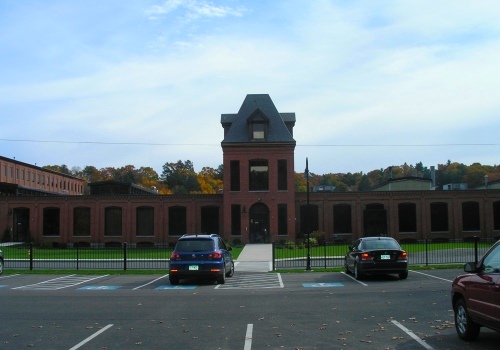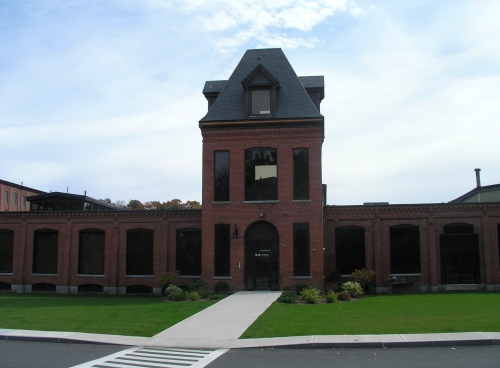Lancaster Mills Company, Mill No.1 (1844)

The brothers, Erastus and Horatio Bigelow, whose carpet company built the mills in Clinton discussed in my last two posts, were also founders of the Lancaster Mills Company, which produced checked gingham textiles. In the early 1840s, Erastus Bigelow had developed a power loom to mechanize the production of cotton checked cloth. In 1844, the Lancaster Mills Company was established and it soon built a complex of mill buildings at the head of the Wachusett Reservoir on a site bounded to the south and west by the Nashua River. The complex is dominated by the massive Mill No. 1 (Weaving Mill), which is only one-story high, but covers a large area. It was originally a single immense room, lighted by skylights. It was built in 1844-1849 and was expanded to the north in 1879-1898, when the current entrance, below a two-story brick tower with a pyramidal roof, was constructed. The image above depicts that later entrance. The building is notable as an early example of a large-scale industrial building designed to house a horizontal manufacturing process. In 1899, it became the first textile mill to be powered entirely by electric generators. The Lancaster Mills Company was the nation’s largest producer of gingham cloth. In later years, the Lancaster Mills buildings became part of the sprawling campus of Colonial Press. In 2011, part of the complex was renovated to become the Lofts at Lancaster Mills.
